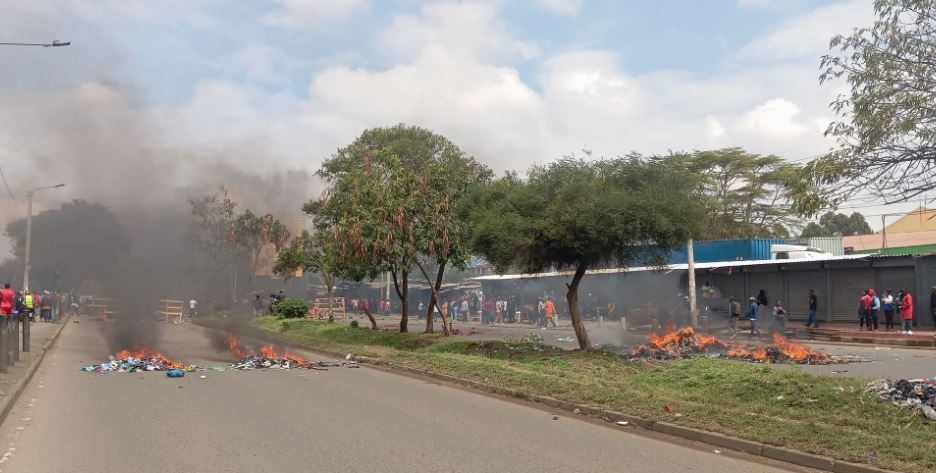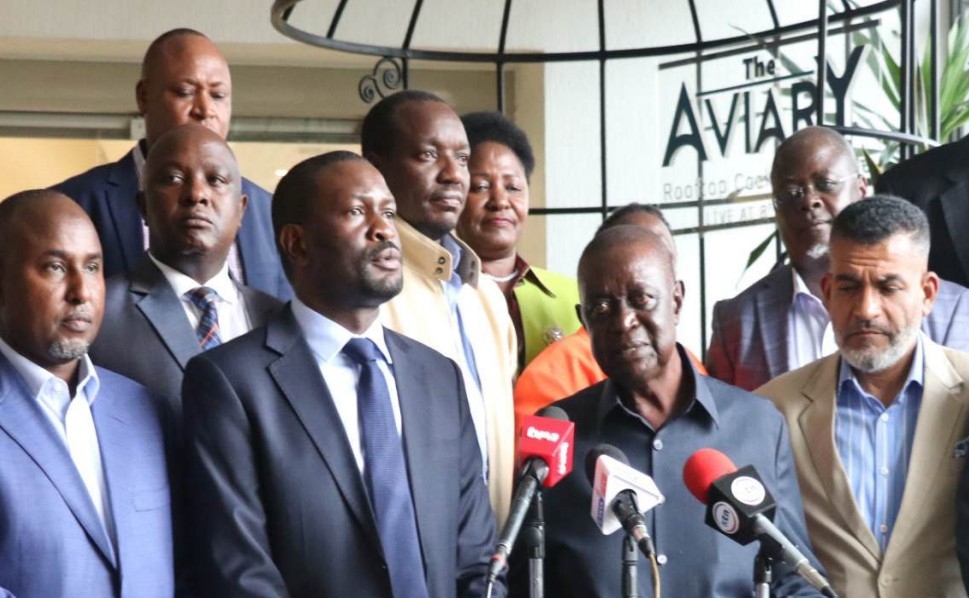Security agencies say they have tamed several plans by terror groups to stage an attack similar to the April 2, 2015 attack on Garissa University.
This has seen a number of the planner either escape, get arrested or be killed.
The agencies say the terror threat remains high but under control, for now, thanks to among others the spirit of multi-agency.
Today April 2, 2023 marks eight years since four terrorists stormed Garissa University, and started to shoot randomly, killing 148 people.
The Somali-based militia group al-Shabaab said it was motivated to attack Kenya because that country sent its troops to Somalia.
Mohamed Mohamud, also known by the aliases of Dulyadin, Kuno and Gamadhere, who was on Kenya’s wanted list after the massacre, was in July 2015 among four senior members of al-Shabaab militants who were killed in a US drone strike.
Interior Cabinet Secretary Kithure Kindiki says they have stepped up the fight against the threat of terror and neutralized terror plans.
“We have disrupted many terror plots at source, neutralised and/or arrested dozens of suspected terrorists, and destroyed a huge cache of weapons and explosives that could have badly harmed our people if they were not intercepted,” he said in a recent briefing.
“The current crackdown on al Shabaab terror cells in Somalia, which is spearheaded by local community leaders with the support of the Federal Government of Somalia, has tremendously weakened this militant group.”
He said security agencies are alert to ensure that militants do not cross into Kenya's territory.
“We have stepped up our border patrols and upped our surveillance on the proliferation of illicit arms, narcotic drugs and psychotropic substances,” Kindiki said.
He said they have improved on intelligence gathering to stay several steps ahead of the enemy.
“We must always strike first and fast to neutralise them and obliterate their nefarious networks.”
Kindiki said hardworking officers in the elite specially trained formed units remain engaged in keeping terror at bay.
On the same issue, just last week the prison sentences for two defendants who were convicted in the terror attacks were lowered by a court.
High Court Justice Cecilia Githua acquitted Hassan Edin Hassan and Mohamed Abdi Abikar of the crime of being members of the al-Shaabab militant group, but she upheld the convictions of conspiracy to commit a terrorist act.
The action lowers their prison sentences from 41 years to 25-and-a-half years.
In 2019, a magistrate court sentenced the duo to 25-and-a-half years for conspiracy to commission and commit a terrorist act and 15-and-a-half years for being members of al-Shabaab.
But in overturning the sentence of being members of al-Shabaab, the judge said the prosecution did not present evidence to prove the two terror convicts were members of the militia group.
To some, the ruling disregards the families of the 148 victims, however, who were killed in the 2015 attacks at the University.
While sentencing the two convicts to 25-and-a-half years in prison, the judge upheld the circumstantial evidence presented by the prosecution, saying it left no doubt that the two were aware of the attack plan and they were the actual perpetrators of the attack.
During the attack, the attackers singled out and shot those identified as Christians as they roamed from building to building.
By the end, 148 people had been killed - mostly students.
Security forces eventually surrounded and killed the men.
The university took nine months to reopen, but now has 1,500 students, more than double the number in 2015.
The attack took place as the students were getting ready for morning prayers when the shooting began at about 05:00 local time.
Gunmen first killed two security guards at the gate before entering the campus and opening fire.
They moved through administrative buildings and classrooms to the dormitories. Almost 900 students were at the university.
Security agencies sealed off the campus and moved in to evacuate students.
The troops managed to clear three of the four dormitories, helping more than 580 people to escape.
At least 79 people were injured.
After almost 16 hours, the four attackers were eventually surrounded and killed in one of the women's halls.
Al-Shabaab, which is affiliated with al-Qaeda, has been behind several attacks in Kenya - including an assault on Nairobi's Westgate mall in 2013, which left 67 people dead and 200 injured, and a siege on a Nairobi hotel complex in January 2019 in which 21 people were killed.
After the attack, a committee of the United Nations Security Council faulted the Kenyan government for failing to act on credible security intelligence about an imminent attack on the college.
The United Nations Monitoring Group on Somalia and Eritrea said multiple intelligence sources told members of the monitoring group the gunmen were known to be in Garissa 10 to 14 days before the attack.
Further, the officials at the college were aware that campus security arrangements were inadequate and had consulted and even written several times to the local government security apparatus, but was not taken seriously by anyone.
When the gunmen stormed the university college, it was only protected by four police officers and 12 unarmed private guards.
Five of the guards were stationed at the main gate and seven at the back of the campus.
The university is 150 kilometres from Kenya’s border with Somalia and 370 kilometres from the capital Nairobi.
Given the weak security measures, students were worried and urged the university administration to request additional police officers.
The gunmen armed with AK-47 assault rifles and grenades reached the main gate of Garissa University College at about 05h30 to 06h30 in two cars and shot dead two unarmed guards at the gate.
The militants’ entry to the campus was facilitated by an unsecured pedestrian gate, which was open to allow residents of the town to attend the campus mosque for Friday prayers.
Once inside the campus, the attackers engaged two policemen who retreated following a brief exchange of fire.
Without opposition, the gunmen quickly proceeded to a classroom used as a Good Friday prayer centre and shot 18 students engaged in prayer.
The monitoring group confirmed that, thereafter, the terrorists split into two teams and succeeded in herding students to a hostel located at the end of the campus.
Once most of the students had been forced into a dormitory, one gunman climbed to the second-floor stairway, which he used as a sniper’s nest to fend off security forces personnel, as well as shoot at students sheltering in neighbouring dormitories.
In one building known as Elgon B that between 107 and 113 students were massacred within an hour of the attackers entering the campus.
Although security personnel arrived at the campus two hours after the attack, no assault on the militants was made.
That only happened when an elite commando unit arrived from Nairobi in the late afternoon and launched an assault on the dormitory, killing all four gunmen and ending the siege at roughly 6 pm.
Officials said the gunmen were equipped with suicide vests, but the UN monitoring group determined that this was not the case.
“One of the militants may have rigged several grenades to serve as a makeshift suicide device,” said its report.
The militants were led by Abdirahim Abdullahi, a law graduate of the University of Nairobi.












